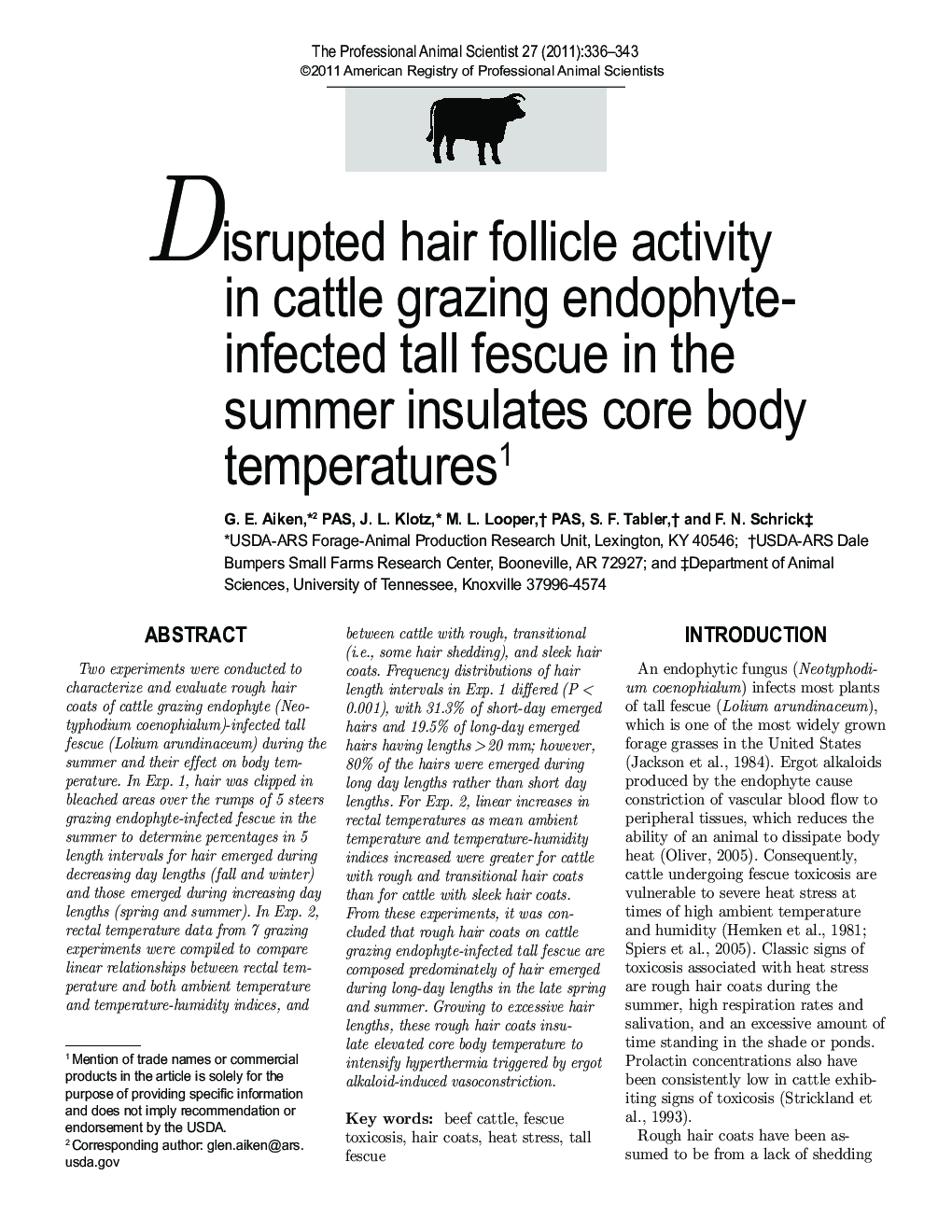| Article ID | Journal | Published Year | Pages | File Type |
|---|---|---|---|---|
| 2454220 | The Professional Animal Scientist | 2011 | 8 Pages |
Abstract
Two experiments were conducted to characterize and evaluate rough hair-coats of cattle grazing endophyte (Neotyphodium coenophialum)-infected tall fescue (Lolium arundinaceum) during the summer and their effect on body temperature. In Exp. 1, hair was clipped in bleached areas over the rumps of 5 steers grazing endophyte-infected fescue in the summer to determine percentages in 5 length intervals for hair emerged during decreasing day lengths (fall and winter) and those emerged during increasing day lengths (spring and summer). In Exp. 2, rectal temperature data from 7 grazing experiments were compiled to compare linear relationships between rectal temperature and both ambient temperature and temperature-humidity indices, and between cattle with rough, transitional (i.e., some hair shedding), and sleek hair-coats. Frequency distributions of hair-length intervals in Exp. 1 differed (P < 0.001), with 31.3% of short-day emerged hairs and 19.5% of long-day emerged hairs having lengths > 20 mm; however, 80% of the hairs were emerged during long day lengths rather than short day lengths. For Exp. 2, linear increases in rectal temperatures as mean ambient temperature and temperature-humidity indices increased were greater for cattle with rough and transitional hair coats than for cattle with sleek hair coats. From these experiments, it was concluded that rough hair coats on cattle grazing endophyte-infected tall fescue are composed predominately of hair emerged during long-day lengths in the late spring and summer. Growing to excessive hair-lengths, these rough hair coats insulate elevated core body temperature to intensify hyperthermia triggered by ergot alkaloid-induced vasoconstriction.
Related Topics
Life Sciences
Agricultural and Biological Sciences
Animal Science and Zoology
Authors
G.E. PAS, J.L. Klotz, M.L. PAS, S.F. Tabler, F.N. Schrick,
